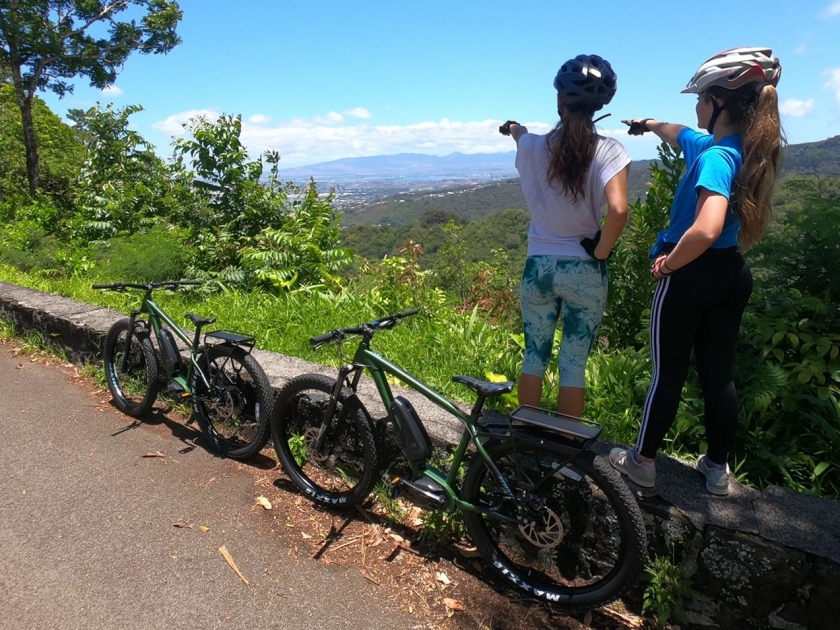Waikiki is a popular destination for biking enthusiasts seeking to explore its scenic routes and attractions. This article delves into the comparison between traditional bikes and electric bikes, highlighting the advantages and disadvantages of each to help you make an informed decision. Choosing the right bike is crucial for maximizing your enjoyment and efficiency while navigating Waikiki’s diverse terrains, ensuring a memorable and comfortable biking experience.
Understanding Traditional Bikes

Definition and basic features of traditional bikes
Traditional bikes, also known as pedal bikes, are manually powered bicycles that require the rider to pedal to move forward. They consist of basic components such as a frame, two wheels, pedals, a chain, handlebars, and a seat. These bikes rely entirely on the rider’s physical effort and are free from electronic or motorized assistance.
Types of traditional bikes (e.g., road bikes, mountain bikes, cruisers)
Traditional bikes come in various types to suit different riding preferences and terrains. Road bikes are lightweight and designed for speed on paved surfaces, making them ideal for city streets and long-distance rides. Mountain bikes are sturdy and equipped with features like suspension and thick tires for off-road trails and rough terrains. Cruisers, with their comfortable seats and upright handlebars, are perfect for leisurely rides along flat, scenic paths like those found in Waikiki.
Pros of using traditional bikes in Waikiki
Traditional bikes offer several advantages for exploring Waikiki. Firstly, they provide excellent exercise benefits, helping riders stay fit and active. Their simplicity and reliability make them easy to maintain, with fewer mechanical issues compared to more complex electric bikes. Additionally, traditional bikes are typically more cost-effective, both in terms of initial purchase price and ongoing maintenance costs, making them an accessible option for many visitors.
Cons of using traditional bikes in Waikiki
Despite their benefits, traditional bikes also have some drawbacks when used in Waikiki. The primary disadvantage is the physical effort required to pedal, which can be tiring, especially on longer rides or hilly terrain. This can limit the distance and speed a rider can comfortably achieve, making it more challenging to cover extensive areas of Waikiki or tackle more strenuous routes.
Understanding Electric Bikes

Definition and basic features of electric bikes (e-bikes)
Electric bikes, or e-bikes, are bicycles equipped with an integrated electric motor that assists the rider’s pedaling. Key features include a rechargeable battery, motor, controller, and often a display screen for monitoring speed and battery life. The motor can be activated by pedaling (pedal-assist) or by using a throttle, offering a boost to help riders tackle longer distances and challenging terrains with less physical effort.
Types of electric bikes (e.g., pedal-assist, throttle-based)
E-bikes come in various types to cater to different riding needs. Pedal-assist e-bikes provide a motorized boost only when the rider is pedaling, making the ride smoother and more natural while extending the battery life. Throttle-based e-bikes, on the other hand, can be powered by a throttle without the need for pedaling, offering a more effortless riding experience. Some e-bikes combine both features, allowing riders to switch between modes depending on their preference and the terrain.
Pros of using electric bikes in Waikiki
Electric bikes offer several advantages for exploring Waikiki. They are easy to use and require significantly less physical effort, making them accessible to a broader range of people, including those who may find traditional biking challenging. E-bikes can achieve higher speeds and cover extended ranges, enabling riders to explore more of Waikiki without fatigue. Additionally, they are ideal for varied terrains, providing the power needed to tackle hills and longer routes effortlessly.
Cons of using electric bikes in Waikiki
However, electric bikes also have some downsides. They come with a higher initial cost compared to traditional bikes, which can be a barrier for some. E-bikes require regular maintenance and charging, adding to the overall upkeep. They are also heavier and bulkier than traditional bikes, which can make them more difficult to transport and handle, especially in tight spaces or when navigating crowded areas in Waikiki.
Comparing Traditional Bikes and Electric Bikes
Performance and convenience
When comparing performance and convenience, electric bikes stand out due to their ability to offer higher speeds and greater distance coverage with less physical effort. Traditional bikes, while reliable and simple, require significant pedaling effort, which can be tiring over long distances or hilly terrains. Electric bikes provide a more convenient option for those looking to explore Waikiki extensively without fatigue, although they are bulkier and require charging.
Speed and distance
Electric bikes can achieve higher speeds and cover longer distances compared to traditional bikes. This makes e-bikes a better choice for riders aiming to explore more of Waikiki in a shorter amount of time. Traditional bikes, while suitable for leisurely rides, limit the rider’s range and speed, making them ideal for shorter, more relaxed journeys.
Effort and fatigue
Traditional bikes require considerable physical effort, which can lead to quicker fatigue, especially on longer rides or steep inclines. In contrast, electric bikes reduce the effort needed, allowing riders to travel further and handle varied terrains with ease. This makes e-bikes more suitable for those who want a less strenuous riding experience.
Cost and maintenance
Purchase price
Electric bikes generally have a higher purchase price compared to traditional bikes. The added technology, including the motor and battery, contributes to this cost, making traditional bikes a more budget-friendly option upfront.
Long-term costs (maintenance, charging, repairs)
In terms of long-term costs, electric bikes may incur higher expenses due to battery replacement, charging, and more complex maintenance and repairs. Traditional bikes, being simpler mechanically, usually have lower ongoing maintenance costs and no charging requirements, making them more economical over time.
Environmental impact

Carbon footprint
Both traditional and electric bikes have low carbon footprints compared to motor vehicles. However, traditional bikes have an edge as they produce no emissions during use, whereas e-bikes involve some environmental impact from electricity consumption for charging.
Sustainability and eco-friendliness
Traditional bikes are highly sustainable and eco-friendly, relying solely on human power. Electric bikes, while still a green transportation option, involve considerations around battery production and disposal. Nevertheless, both types of bikes contribute positively to reducing overall carbon emissions and promoting sustainable transport choices in Waikiki.
Choosing the Right Bike for Waikiki
Factors to consider (e.g., fitness level, budget, intended use)
When choosing the right bike for exploring Waikiki, consider your fitness level, budget, and intended use. If you are fit and enjoy a good workout, a traditional bike may be ideal. However, if you prefer a more leisurely ride with less physical effort, an electric bike could be a better choice. Budget is also important, as traditional bikes are more affordable, while electric bikes offer more features at a higher cost. Additionally, think about how you plan to use the bike—whether for short, scenic rides or longer, more demanding routes.
Popular routes and their suitability for traditional or electric bikes

Waikiki offers a variety of biking routes, each with different suitability for traditional and electric bikes. Scenic routes along the coast are perfect for traditional bikes, providing a relaxed and picturesque experience. In contrast, routes with challenging terrains, such as steep hills or longer distances, are better suited for electric bikes, which can help riders manage the physical demands more easily.
Renting options in Waikiki
Waikiki has numerous rental shops catering to both traditional and electric bike enthusiasts. For those preferring traditional bikes, there are plenty of rental shops offering a wide range of options, from road bikes to cruisers. These shops often provide affordable daily or weekly rental rates. On the other hand, several rental shops specialize in electric bikes, offering a variety of models with different features. These shops also provide necessary accessories like helmets and chargers, ensuring a smooth and enjoyable biking experience in Waikiki.Alternatively, you can opt for guided bicycle tours to enhance your experience and explore Waikiki with the help of local experts.
Pedaling or Powering Up?
Both traditional and electric bikes offer unique advantages and considerations for exploring Waikiki. Traditional bikes provide a cost-effective and fitness-enhancing option, perfect for those who enjoy a good workout and simplicity. Electric bikes, on the other hand, offer convenience, extended range, and ease of use, making them ideal for longer rides and varied terrains. Ultimately, the choice between a traditional bike and an electric bike depends on your fitness level, budget, and intended use. Whichever you choose, biking through Waikiki is a wonderful way to experience its beauty and charm. Remember to ride responsibly, respect local regulations, and enjoy your biking adventures in this scenic paradise.




